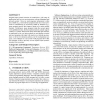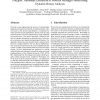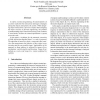28 search results - page 2 / 6 » Tupni: automatic reverse engineering of input formats |
SIGSOFT
2008
ACM
14 years 5 months ago
2008
ACM
Program input syntactic structure is essential for a wide range of applications such as test case generation, software debugging and network security. However, such important info...
CCS
2007
ACM
13 years 10 months ago
2007
ACM
Protocol reverse engineering, the process of extracting the application-level protocol used by an implementation, without access to the protocol specification, is important for m...
MBEC
2010
2010
Reverse engineering the kidney: modelling calcium oxalate monohydrate crystallization in the nephron
12 years 11 months ago
Crystallization of calcium oxalate monohydrate in a section of a single kidney nephron (distal convoluted tubule) is simulated using a model adapted from industrial crystallization...
ICSM
2003
IEEE
13 years 9 months ago
2003
IEEE
In object oriented programming, the functionalities of a system result from the interactions (message exchanges) among the objects allocated by the system. While designing object ...
EMNLP
2009
13 years 2 months ago
2009
We present a framework to extract the most important features (tree fragments) from a Tree Kernel (TK) space according to their importance in the target kernelbased machine, e.g. ...



